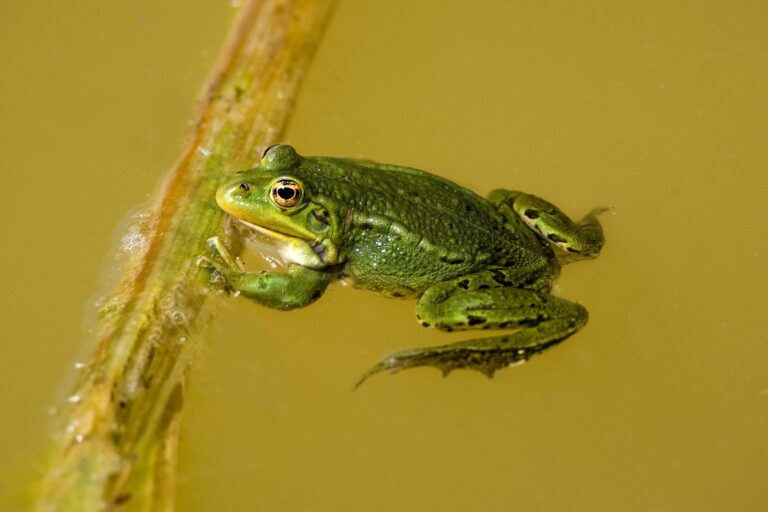Pelophylax esculentus

Pelophylax “esculentus” is a hybrid species of water frog and marsh frog, reaching a size of up to 12 cm. The upper body surface is usually green to brownish in color and adorned with dark spots, often featuring a light green stripe along the back. Yellow spots can be found on the thighs, particularly during the breeding season. The common water frog utilizes slow-flowing streams, ditches, and ponds as breeding sites. In March, after hibernation, the frogs become active, and reproduction takes place between May and June. The female can lay up to 8,000 eggs. Grass snakes, various bird and mammal species such as grey herons, badgers, raccoons, and various fish species like pike are considered predators of Pelophylax “esculentus”. Additional threats include the elimination of small bodies of water and the conversion of grassland habitats (Glandt 2018).
Diet: Tadpoles of the common water frog have a partially plant-based diet, as well as feeding on small organisms and frog spawn. Adult frogs consume insects, spiders, worms, and snails (Glandt 2018).
Conservation status: According to the Red List of Germany, the common water frog is classified as “Least Concern.” It is considered “specially protected” under the Federal Nature Conservation Act and the Federal Species Conservation Ordinance.
-
Glandt, D (2018)Praxisleitfaden Amphibien- und Reptilienschutz. Schnell – präzise – hilfreich. Berlin, Heidelberg: Springer Berlin Heidelberg.